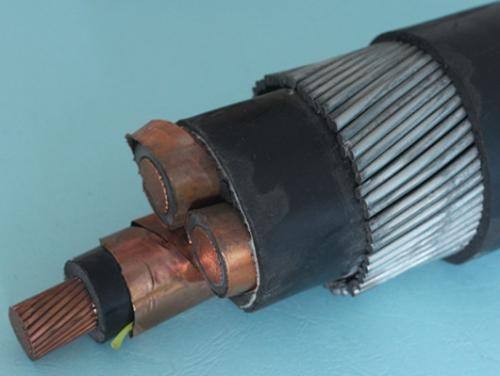
The outermost layer of the power cable is generally a rubber or rubber composite sleeve.
The function of this layer is to insulate, and also to protect the cable from damage.
The power cable is divided into high voltage or low voltage cable.
If it is high pressure, there will be a layer of resin-like filler inside, which is used for insulation.
In high-voltage cables, this layer is the most important part of insulation.
There is no such thing in the low pressure, and then there will be something like a ribbon wrapped in it, in order to fix each core of the cable and fill the gap in the middle.
The shielding layer of the power cable has two functions: one is because the current passing through the power cable is relatively large, and a magnetic field is generated around the current.
In order not to affect other components, the shielding layer can be used.
The electromagnetic field is shielded in the cable; the second is to provide a certain grounding protection.
If the cable core is damaged, the leaked current can flow through the shield layer, such as the grounding grid, to play a role of safety protection.
The control cable is in many places, especially the control cable of the computer system.
The shielding layer here is used to shield the external influence, because its own current is very weak, and it is very afraid of the external electromagnetic field.
The power cable should be composed of: a conductive core, an insulating layer, and a protective layer.
Conductive core, inner semiconductive layer, insulating layer, outer semiconductive layer, copper shield, filler, inner liner, double steel strip protective layer, outer sheath (described above for 10kV power cable).
The power cable is used to transmit and distribute large functional power in the main line of the power system, and the control cable directly transfers the electric energy from the power distribution point of the power system to the power connection line of various electrical equipment appliances.
The rated voltage of the power cable is generally 0.6 / 1KV and above, and the control cable is mainly 450 / 750V.
In the production of power cables and control cables of the same specification, the insulation and sheath thickness of the power cables are thicker than the control cables.
(1) The control cable is a cable for electrical equipment, and the power cable is two of the five major categories of cables.
(2) The standard for control cables is 9330, and the standard for power cables is GB12706.
(3) The color of the insulated core of the control cable is generally black and white, and the low voltage of the power cable is generally color separation.
(4) The cross section of the control cable generally does not exceed 10 square meters. The power cable is mainly for transmitting electricity, and generally has a large cross section.